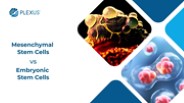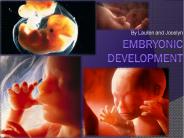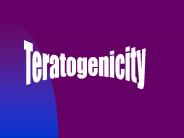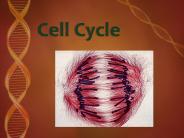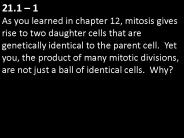Embryonal PowerPoint PPT Presentations
All Time
Recommended
We often hear that Embryonal Brain Tumor is a rare condition. But the fact that most people ignore is despite being rare it is responsible for 12.3 % of all primary brain tumors in children aged 0 to 14 years. This is raising an important question: Are they truly rare?
| PowerPoint PPT presentation | free to download
... of his excised testes(1999) Testes biopsy. Cartilage. Glandular. Alveolar. Glomeruloid bodies or endodermal sinuses. Testes biopsy-alveolar bodies. Testes biopsy-3 ...
| PowerPoint PPT presentation | free to view
Shear stress responsiveness in an embryonal chicken heart M. Pourquie1, P. Vennemann1, B. Groenendijk2, B. Hierck2, S. Stekelenburg-de Vos3, N. Ursem3, R. Poelmann2 ...
| PowerPoint PPT presentation | free to download
teratoma, but embryonal carcinoma and Seminoma were found microscopically. embryonal carcinoma mixed with teratoma. Endodermal sinus tumor (yolk sac tumor) of the ...
| PowerPoint PPT presentation | free to view
Testicular Tumors Classification Germ cell tumors : -Seminoma -Spermatocytic seminoma -Embryonal carcinoma -Yolk sac (endodermal Sinus) tumor ...
| PowerPoint PPT presentation | free to view
Bypass of 8 codons in the plaA gene of Prevotella loescheii by an unknown mechanism. ... Edr (embryonal carcinoma differentiation regulated) Human homologue PEG10 ...
| PowerPoint PPT presentation | free to view
Subway riders injured in Aum Shinrikyo Sarin gas attack, Tokyo, March 20, 1995. ... contaminated with embryonated Ascaris suum ova, a large ringworm infecting pigs. ...
| PowerPoint PPT presentation | free to view
... as having evolved from fish through reptiles to mammals is accepted (though ' ... no cleanly defined 'fish', 'reptile' and 'mammal' stages of human embryonal ...
| PowerPoint PPT presentation | free to view
Samples must be representative of the flock and of the pathology ... At necropsy. Air sacs. Joint, articular liquid. embryonated eggs. Vitellus. Environment ...
| PowerPoint PPT presentation | free to view
The Use of ICE therapy (Ifosfamide, Carboplatin and Etopside) and Avastin/Irinotecan to Treat Undifferentiated Embryonal Sarcoma Alison Chase DO, Asneha Iqbal MD ...
| PowerPoint PPT presentation | free to download
scolex - the end of the worm specialized for attachment to the ... hatch from embryonated eggs in the large ... in the perianal folds; scotch tape test ...
| PowerPoint PPT presentation | free to view
V4: cellular reprogramming Embryonic development Stem cells Differentiation iPS cells Oct4 Paper4 3D-Model of the human genome, Spiegel Online Model of a human cell,
| PowerPoint PPT presentation | free to view
Esg1, expressed exclusively in preimplantation embryos germline, embryonic stem ... Frist choice Mouse Blot 1 and Mouse Embryo Stage Blot were hybridized with a ...
| PowerPoint PPT presentation | free to view
Copy URL | gooread.fileunlimited.club/pw23/0683306448 | PDF Permar's Oral Embryology and Microscopic Anatomy: A Textbook for Students in Dental Hygiene 10th Edition Kindle Now in its Tenth Edition, Permar's Oral Embryology and Microscopic Anatomy continues to provide comprehensive, yet concise coverage of embryology and histology for dental hygiene and dental assisting professions. It can also be used as an introductory text for dental students. This text begins with the basics of general histology, progresses through the development of the human embryo and fetus, and concludes with a focus on the development of the face and oral cavity. New to this edition are over 40 additional illustrations, including four-color micrographs. High-quality images of microscopic embryonic development and oral anatomy help students identify histologic structures. A new chapter regarding salivary glands includes information about remineralization, deminer
| PowerPoint PPT presentation | free to download
Copy Link : gooread.fileunlimited.club/pw24/1455739774 | Download Netter's Atlas of Human Embryology 1st Edition Kindle Here's a rich pictorial review of normal and abnormal human prenatal development. For each body system or region, you'll find a brief description of the developmental plan, with key concepts and terminology, followed by discussions of histological principles, the classification of congenital defects, and basic cellular, molecular, and genetic concepts. An emphasis on morphological patterns in the embryo and fetus makes it easy to understand the structure and function of the adult body and the embryonic basis of birth defects.·        Summary tables and terminology sections at the end of each chapter, plus an appendix with all major congenital defects and their embryonic basis, make it easy to review course material and prepare for the USMLE.·        Access the complete text and images online at st
| PowerPoint PPT presentation | free to download
Copy Link : gooread.fileunlimited.club/pw24/0443117616 | [PDF] Netter's Atlas of Human Embryology (Netter Basic Science) Android Illustrated by the world-renowned Frank H. Netter, MD and artists working in his tradition, Netter's Atlas of Human Embryology, 2nd Edition, provides a rich pictorial overview of human prenatal development. For each stage of development and for each body system, you'll find a brief description of the developmental plan, with key concepts and terminology, followed by discussions of histological principles, the classification of congenital anomalies, and basic cellular, molecular, and genetic concepts. An emphasis on morphological patterns in the embryo and fetus makes it easy to understand the structure and function of the adult body and the embryonic basis of natural variation as well as birth anomalies.Uses vibrant, high-quality illustrations and concise text to teach key points quickly, effectively, and memo
| PowerPoint PPT presentation | free to download
Stem cells are undifferentiated and unique cells with the potential to develop into various specialized cell types in the body. They can be regarded as the building blocks of the body - capable of self-renewal and differentiation.
| PowerPoint PPT presentation | free to download
This presentation by Dr. David Greene provides an overview of the differences between human adult and embryonic stem cells. It covers topics such as the advantages and characteristics of each type of stem cell and its potential therapeutic applications. The presentation offers an accessible and informative introduction to the topic, making it an ideal resource for learners. This PPT is ideal for anyone looking for a basic understanding of the differences between adult and embryonic stem cells. Visit our website for more information.
| PowerPoint PPT presentation | free to download
http://www.rminlasvegas.com/ - Early stem cell research has generally been connected with the controversial utilization of embryonic stem cells. The new focus is on non-embryonic adult mesenchymal stem cells which are discovered in an individual's own blood, bone marrow, and fat.
| PowerPoint PPT presentation | free to download
Stem cells are those cells that can replicate or differentiate. It means that these cells cannot only multiply but it can turn into different types of tissues. There are different types of stem cells as most people are familiar the term ‘embryonic stem cell’. They are from the embryonic stage that have yet to differentiate during pregnancy.
| PowerPoint PPT presentation | free to download
To learn more about this report @ http://bit.ly/2YumKue This report focuses on the global Human Embryonic Stem Cell (hESC) status, future forecast, growth opportunity, key market and key players. The study objectives are to present the Human Embryonic Stem Cell (hESC) development in United States, Europe and China.
| PowerPoint PPT presentation | free to download
Stem cells are a class of undifferentiated cells that are able to differentiate into specialized cell types. Commonly, stem cells come from two main sources: Embryos formed during the blastocyst phase of embryological development (embryonic stem cells) and. Adult tissue (adult stem cells). This presentation contains_ 1.introduction 2.source of stem cell 3.types of stem cell 4. applications 5. acknowledgment 6. refference
| PowerPoint PPT presentation | free to download
Stem Cells and Regenerative Medicine At the beginning of embryonic development, stem cells undergo symmetric cell division. They divide symmetrically, where one cell ...
| PowerPoint PPT presentation | free to view
A1 Stem Cells, beyond addressing the symptoms of your condition, cares to address its causes. We take it as our mission to find the source of your ailments, whether there are metal, pollutants or parasites of all sorts, then free you from these accumulated toxins, and finally restore the functionality of your organs thanks to our embryonic stem cells treatment. We will also counsel you so that you can maintain your regained well being and vitality once back home.
| PowerPoint PPT presentation | free to download
Biotechnology Dolly and surrogate Mom Embryonic stem cells and gene therapy Genetically modified rice.
| PowerPoint PPT presentation | free to view
La cavit c lomique interne L intestin primitif Le n ud de Hensen Vue sagittale d un embryon l intestin primitif et ses diff rentes parties Les troncs ...
| PowerPoint PPT presentation | free to download
A. The two structures appear almost identical at an early stage of embryonic development B. The genes coding for the two structures utilize the same nitrogenous bases ...
| PowerPoint PPT presentation | free to download
Stem Cells Why the Controversy Over Stem cells? Embryonic Stem cells are derived from extra blastocysts that would otherwise be discarded following IVF.
| PowerPoint PPT presentation | free to view
Cells Overview Chapter 3 for Anatomy Chapter 7 for Biology Life is Cellular A cluster of neural cells were derived from human embryonic stem cells in the lab.
| PowerPoint PPT presentation | free to download
Visit Here: https://www.grandresearchstore.com/life-sciences/global-human-embryonic-stem-cells-hesc-market-size-status-and-forecast-2025 This report studies the global Human Embryonic Stem Cells (HESC) market size, industry status and forecast, competition landscape and growth opportunity. This research report categorizes the global Human Embryonic Stem Cells (HESC) market by companies, region, type and end-use industry.
| PowerPoint PPT presentation | free to download
Evidence of Evolution Fossils Vestigial Structures Embryonic Development DNA sequences
| PowerPoint PPT presentation | free to view
By Lauren and Jocelyn
| PowerPoint PPT presentation | free to download
Mei osis Fertilization Embryonic Development early development of an organism within 2 months of fertilization zygote undergoes mitosis (many times) After a week, a ...
| PowerPoint PPT presentation | free to view
In vitro fertilization. * The Fifth Commandment prohibits: Embryonic stem-cell research and cloning. Euthanasia and physician-assisted suicide. Death penalty.
| PowerPoint PPT presentation | free to download
It is the science dealing with the development of congenital malformations. A teratogen ( terat = monster or ugly animal): It is a substance that alters embryonic or ...
| PowerPoint PPT presentation | free to download
Tissues Definition? Histology- study of tissues within the body systems Classified based on: Embryonic development Intercellular space Four Tissue Types
| PowerPoint PPT presentation | free to view
Stem Cells and Cancer Human development: a stem cell hierarchy Developmental hierarchies: the hematopoietic system Embryonic versus adult Isolated from early embryos ...
| PowerPoint PPT presentation | free to download
The Cell Cycle & The Process of Cell Division Purpose of Mitosis Growth Embryonic development Tissue repair Asexual reproduction The Role of the Chromosome ...
| PowerPoint PPT presentation | free to view
The Tissue Level of Organization Group of similar cells common embryonic origin common function bound together by intercellular substance Histology study of tissues ...
| PowerPoint PPT presentation | free to view
Embryonic development Ovum Fertilised ovum Cell Division Development of the embryo Arm where an arm should be and not from the top of your head HOW?
| PowerPoint PPT presentation | free to download
... Calibri Wingdings Office Theme Development and Myogenesis Process outline Embryonic structure Gastrulation Neurulation Somites Quail-chick chimeras ...
| PowerPoint PPT presentation | free to view
Neurulation Slide 25 Neurulation The Neural Crest Organogenesis Slide 29 Organogenesis Begins With Development of the Nervous System 7. ...
| PowerPoint PPT presentation | free to view
Towards Robust Bio-Inspired Circuits: The Embryonics Approach. Daniel Mange. ECAL'99: Sept. 15 ... From S.F. Gilbert, Developmental Biology, Sinauer, 1991 ...
| PowerPoint PPT presentation | free to download
Exercise 44 Survey of Embryonic Development Objectives: Fertilization, zygote, morula, blastocyst, gastrula, fetus, chorion, chorionic villi, placenta, amnion, yolk ...
| PowerPoint PPT presentation | free to download
Cell Cycle Key Roles of Cell Division Functions in asexual reproduction, growth, embryonic development, tissue repair. Distributes identical sets of chromosomes to ...
| PowerPoint PPT presentation | free to download
Pregnancy Loss and Parturition John Parrish Distribution of Prenatal Losses Fertilization 100% Under optimal conditions 2/3 loss during embryonic development ...
| PowerPoint PPT presentation | free to download
... 1 Information deposited by the mother in the egg (cytoplasmic determinants) is required for embryonic development. 21.2 2 If you clone a carrot, ...
| PowerPoint PPT presentation | free to download
Progress Before Birth: Prenatal Development 3 phases germinal stage = first 2 weeks conception, implantation, formation of placenta embryonic stage = 2 weeks 2 ...
| PowerPoint PPT presentation | free to download
DE LA FECONDATION A LA NAISSANCE f condation, etc. d pistage d anomalie Suivi de grossesse et d veloppement de l embryon Accouchement PMA
| PowerPoint PPT presentation | free to download
Embryoid Bodies From Embryonic Stem Cells In-vitro Robert Christensen Biology Department Eastern Connecticut State University Endoderm Specific Gene Expression in ...
| PowerPoint PPT presentation | free to download
The Skeletal System NO BONES ABOUT IT! Did you know? The adult skeleton has 206 bones Things to Know: Oste bone Art joint -blast germ or embryonic ...
| PowerPoint PPT presentation | free to view
Ejaculation 300 million sperm, 100 reach (uterine) fallopian tube. ... Spermatogonia and oogonia migrate from yolk sac to developing embryonic gonads. ...
| PowerPoint PPT presentation | free to view
Plant Morphology Meristem Tissue- embryonic tissue located at the tips of roots and stem apices (herbaceous & woody plants) and cambium layers (woody plants).
| PowerPoint PPT presentation | free to view
Has no specific function Differentiates into different types of cells Turns into mature cells from all organs in the body 2 types of stem cells Non-embryonic (adult ...
| PowerPoint PPT presentation | free to view
Stem cell research and experimentation have been in process for well over five decades, as stem cells have the unique ability to divide and replicate repeatedly. it is often limited in nature, which results in fewer options for use. Thus, induced pluripotent stem cells represent a promising combination of adult and embryonic stem cell characteristics. See Full Report : http://bit.ly/1BVrMx3
| PowerPoint PPT presentation | free to download
Seed coat- outside covering which protects embryonic plant ... add manure, grass clippings, or compost to improve soil structure (organic matter) ...
| PowerPoint PPT presentation | free to download















![[PDF] Netter's Atlas of Human Embryology 1st Edition Kindle PowerPoint PPT Presentation](https://s3.amazonaws.com/images.powershow.com/10082437.th0.jpg)

